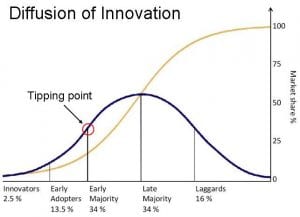Selecting the right supplier capable of meeting unique business demands and application needs is a crucial process for any company. The types of suppliers today span a large spectrum of business models. Some offer product only, while others bundle in additional services and capabilities. Understanding exactly what products and services a business requires is critical to the supplier selection process.
The same philosophy can be used when selecting the ideal lubricant supplier. Factors such as price, services offered, reliability, quality, and technical expertise – among others – must be understood by key stakeholders at each company. Those factors must be prioritized to fit the needs of the business. While there are many criteria to consider, most can be narrowed down to a few major categories for evaluation purposes.
There are five key areas (categories) of criteria to understand and evaluate during the lubricant supplier selection process. The five areas to focus on are: Application Expertise, Diverse Chemistry, Supply Reliance, Risk Abatement, and Ability to Serve. Each area addresses selection criteria that should be fully understood and agreed upon by those key stakeholders at each company.
Application Expertise
Every application has its own criteria to carefully consider, and therefore the demands placed on the lubricant are just as unique. A hydraulic fluid requires physical properties and performance specs different than that of a compressor lubricant used in a refrigeration application. Intimate knowledge of the system itself – the type of engine or compressor and system components, the working conditions of the system, metallurgy & tribology aspects, and other important details – is critical to recommending the proper lubricant.
Many companies require numerous lubricant recommendations for different applications/processes spanning several geographical regions, or even concentrated at one large manufacturing site. They should consider seeking out a lubricant supplier with proven knowledge and expertise across a number of industries and market segments. Some applications are so unique they are served by lubricant suppliers with niche expertise in that particular application. In cases such as these, partnering with the most experienced provider can help to ensure the best possible lubricant recommendations.
However, having one “single source” provider of lubricants for multiple applications is ideal and carries many benefits. Reducing the number of vendors a company has to interact with can help minimize complexity. There may also be cost benefits offered by lubricant suppliers when multiple products and/or services are contracted. Additionally, one single-source provider may be able to identify other opportunities across the site or throughout regional locations for better lubricant recommendations. This could further minimize complexity, realize cost benefits, increase efficiency, or all of the above.
How challenging is the application? Are the working conditions severe? Is the system working in operating conditions involving extreme temperature ranges, challenging environmental aspects, or any other number of factors? If the answer is ‘yes’ then contracting a lubricant supplier qualified to solve those challenges is necessary. Not all suppliers are created equal. Many good suppliers do not have the technical expertise, problem-solving acumen, or leveraged resources capable of tackling complex application challenges. When applications are known to have recurring challenges or harsh operating conditions, supplier evaluation must include the capabilities to solve these unique problems.
Diverse Chemistry
 A considerable number of compressor systems and operating equipment components are capable of using different base oil/additive chemistries to meet the requirements of the application. Depending on the exact requirements and operating conditions, several formulations can “get the job done”. The differences lie in the expected performance (driven by base oil used) and additional features provided (by utilizing additives). For example, some low-cost mineral oils are good options for certain applications, whereas semi-synthetic lubricants may boast longer life with less potential for oil loss. A supplier with a diverse chemistry portfolio can make a holistic recommendation based on chemistry, cost, and performance to offer the best solution for the application.
A considerable number of compressor systems and operating equipment components are capable of using different base oil/additive chemistries to meet the requirements of the application. Depending on the exact requirements and operating conditions, several formulations can “get the job done”. The differences lie in the expected performance (driven by base oil used) and additional features provided (by utilizing additives). For example, some low-cost mineral oils are good options for certain applications, whereas semi-synthetic lubricants may boast longer life with less potential for oil loss. A supplier with a diverse chemistry portfolio can make a holistic recommendation based on chemistry, cost, and performance to offer the best solution for the application.
Many suppliers leverage strong technical resources supported by highly skilled employees, state-of-the-art equipment and facilities dedicated to research and testing. Suppliers with strong technical support coupled with a diverse chemistry toolbox can offer several advantages:
- Formulation expertise to design lubricant solutions with properties best suited to minimize known application challenges and enhance performance. Companies can choose the best option for their needs versus working with a supplier only capable of offering limited solutions.
- Oil analysis services to help monitor performance and identify issues by understanding trends that are identified through consistent oil sampling programs. Some benefits of regular oil analysis (when applicable) include longer life for equipment, reduced production downtime and decreased maintenance/repair expenses.
- Lubricant options offered across multiple applications for one company, as well as tiered options offered for one specific Many even offer product variations in line with the “good” “better” “best” philosophy to allow choices that balance performance, cost, and availability.
Companies must determine for themselves how important it is to select a lubricant supplier with a diverse chemistry toolbox. Some may not require a supplier that offers multiple solutions. A company may simply desire reliable supply of a suitable lubricant option for their application at an acceptable price point. The key takeaway is this: Understand exactly what capabilities a lubricant supplier must have with respect to offering diverse chemistry options and formulation expertise. Every company is unique and must match a supplier’s strengths with their most critical lubrication needs.
Supply Reliance
Supplier selection must include evaluating the strength of their supply chain to effectively provide goods and services. Solid supply chain management can result in competitive advantages passed from the supplier on to the customer. Conversely, poor management of supply chain can hinder a company’s ability to compete or much worse. Channel partners, such as lubricant distributors, may not be able to meet end-use customer demands if their suppliers falter. Supply interruptions can cause ripple effects that result in additional downtime, leading to lost production, culminating in decreased revenue opportunities.
Larger companies, such as original equipment manufacturers (OEMs), require significant volumes of lubricant supply to maintain production across their manufacturing facilities. They should research and investigate how potential suppliers leverage their available supply of base oils, additives and other key components to lubricant manufacturing. Identifying potential risks such as shortages is crucial to avoid future delays or shut-downs in their production schedules. Lost production can be costly to OEMs – in some extreme cases it could result in losing hundreds of thousands of dollars a day. Of course, there is a limit as to how much a lubricant supplier is willing to discuss their strategy, as much of their contractual agreements are sensitive and/or protected. However, a broader view of their supply capabilities, in addition to volume assurances, need to be understood and agreed upon by both parties.
Companies that conduct business on a global scale must also consider the size and scope of their supplier’s geographic supply chain footprint. Those operating on a smaller regional scale (such as the East Coast of the United States) may not be as concerned if their supplier has manufacturing and warehouse facilities in North America, France and China. Securing stable supply from a distribution channel somewhere in say, Indiana or Pennsylvania, is more of a concern for them.


Some of the benefits of working with a supplier who has operations strategically located around the world are: lucrative shipping options, local/regional/national tax advantages, and the potential to reduce tariffs. Lubricant customers need reliable supply which, in part, relies on accurate lead times to get shipments to their door. Partnering with a supplier who has a global operations footprint provides options for getting product to customers in different regions in a timely manner. Some smaller lubricant suppliers, or those without a global supply chain, may not be able to meet forecasted demand in the desired timeframe. Understanding how a supplier leverages their network is an important evaluation metric for companies to consider.
The costs associated with shipping products from one country or nation to another vary – depending on a number of factors. Some costs are reasonable, while others can put companies at a severe disadvantage. If they lack the financial resources or scale to absorb those costs, their margins may be impacted significantly. Taxes may be applied to goods entering a nation, a region, or even a local municipality. Tariffs in place because of geo-political relations between nations (ex: China and the U.S.) can have serious affects on global commerce. A supplier with strategic locations may be able to alleviate some of these extra costs by taking advantage of beneficial trade agreements or by utilizing local supply opportunities to avoid tax implications. In summary, supply reliance must be evaluated carefully to determine if a supplier’s capabilities meet the needs of the company.
Risk Abatement
Eliminating risk and assuring product quality are certainly near the top of the list when evaluating potential lubricant suppliers. End users need to ensure the quality of the lubricant they are using in their compressor system or industrial machinery. Poor quality lubricants can lead to system issues up to and including complete failure of the compressor or other components. Distributors or other channel partners run the risk of damaged reputation or worse – legal battles over product failures or voided warranties – if they provide lubricants of poor quality to their customers. Equipment manufacturers and packagers demand quality lubricants for many of the same reasons as distributors. They also run the risk of damaged reputation, product recalls, and legal battles over warranty claims.
The use of lubricants that have been produced in facilities adhering to global industry standards and tested for quality (subject to third party audits), is essential to risk abatement. Meeting the requirements of numerous certifications, registrations, and standardized practices is mandatory for lubricant suppliers. These requirements fall largely in the areas of chemical responsibility (such as REACH or Responsible Care®), manufacturing standards (such as ISO certifications), health and safety standards (such as GHS classifications or OSHA laws for workers). Other important certifications such as NSF, Halal, and Kosher are necessary when the lubricants are being used in food and beverage processing facilities.
Private Label Risk Abatement
Private labeling is a common practice in the manufacturing and distribution of goods & services. The idea is simple – companies see additional revenue opportunities from selling goods & services under their brand – but they lack the necessary expertise to do so themselves. Private labeling is very common in the compressor lubricant and industrial fluids manufacturing industry. The required resources of human talent, specialized technology, and state-of-the-art equipment are not easily replicated.
Private label (PL) fluids are prevalent throughout the value chain as both manufacturers and a variety of distribution channel partners offer up someone else’s chemistry in a package branded with their colors and their logo. Considering all the benefits private labeling offers, one of the most attractive is that (in most cases) the registrations and certifications (such as NSF H1 for example) pass through to the private label products. Companies in the supplier selection process considering offering their own lubricants should carefully evaluate the private labeling capabilities of the supplier. Questions such as, “Are your product certifications and registrations current?” and “Will certifications such as NSF pass through to the private label products?” are necessary to understand exactly what they are getting from the supplier. As beneficial as PL products can be to adding revenue streams, failing to check all the boxes on a supplier can have negative unintended consequences.
In summary, risk abatement can be challenging to plan for and to execute, but with proper supplier evaluation it can be managed effectively. Companies need to ensure their potential supplier is following all current standards, such as those established by ISO. These standards, which are quite common in manufacturing, are aimed at ensuring goods and services are safe, reliable and of good quality. As mentioned, review of all product/service registrations and certifications for accuracy is recommended. Making sure all best practices are being followed before contracting a supplier can avoid “surprises” down the road. Those “surprises” can be costly and have long-lasting negative effects to a company’s reputation.
Ability to Serve
Evaluating a supplier’s “Ability to Serve” borrows a few of the concepts from the previous areas of evaluation yet maintains its own unique criteria at the same time. The concept of a supplier’s ability to serve can be summarized in the following question: “How capable is the supplier to serve the needs of a particular company?”. Depending on the size, scope, diversity and unique needs of a given company that answer could vary. In general, the following points should be addressed when evaluating a potential supplier’s ability to serve.


Questions to consider: Does my company need the lubricant only? Is my company considering a private label brand to sell? How much complexity does my company need managed?
Lubricant suppliers are quite diverse in the number of products and services they offer. Some only offer the product itself packaged under their brand. On the other hand, some suppliers offer the full spectrum of lubricant management services including formulation, manufacturing, packaging variations, marketing assistance, private label services, distribution, and oil monitoring (testing) services. The needs of a company may change over time. Select a supplier that can serve current needs and support expansion efforts in the future.
Level of Technical Expertise Required
Questions to consider: How much technical support does my company need? How complex are my company’s applications? Do they require customized recommendations or are they straightforward in nature? Will we need ongoing collaboration and/or training?
Determining the level of technical support a company needs is a very important factor in the supplier selection process. For example, some companies only need low-technology lubricants (think mineral oil-based options) to fill a compressor and keep it operational. However, in applications such as hydrocarbon gas processing, the need for customized lubricant recommendations based on challenging operating conditions is required. The more complex an application or operating environment, the higher the likelihood of problems arising. Competent lubricant support can provide faster resolution to problems occurring in the field and avoid costly delays or equipment failures. In addition, need for local technical support versus remote consultation is a huge consideration, depending on the individual needs of an organization.
Lubricant training – whether it’s basic fundamentals or advanced diagnostic methodology – is not available from all lubricant suppliers. Channel partners, such as distributors, benefit tremendously from lubricant training to educate their salesforce and serve their customer base more effectively. It can be a significant competitive advantage. Careful evaluation of a potential supplier’s training resources should be discussed and considered depending on the needs of the company. In this information-rich digital environment, the ability to provide the right recommendations and advice to customers is crucial due to the vast amount of misleading or one-sided content found online.
Organizational Size & Impact
Questions to consider: How important is the global reach of my supplier? What level of collaboration does my company need to develop new technologies? Is the supplier built for the long-haul?
In the Supply Reliance area of evaluation discussed earlier, the importance of determining the global reach of the supplier is necessary to match a company’s needs to the products and services provided. Companies serving customers in one singular country have much different requirements than those operating on a global scale. Many factors including supply chain, regulatory requirements, profitability, and technical support need to be considered. Again, current growth goals must be weighed against future growth aspirations to ensure the supplier selection supports all present and future initiatives.


Many of the suppliers who favor innovation have established relationships with key industry stakeholders. For example, in the refrigeration industry, ties to groups such as ASHRAE provide instrumental connections to OEMs and refrigerant gas suppliers to evaluate future industry demand and collaborate to develop new solutions to allow sustainable refrigerants to prosper and lessen the effects of environmental impacts.
In the end, a company must decide for themselves how crucial the size and scope of their supplier is to their success. It all comes down to the individual strategy and growth aspirations of each company. The best fit of a supplier must be determined by a qualified cross-functional team employed by the company in search of the best supplier.
Conclusion
The selection process for a lubricant supplier is an important undertaking for any company. Identifying strengths and weaknesses are crucial to the success of OEMs, distribution channel partners and end users alike. There are many business models to choose from, and ultimately a company must select based on their own unique criteria to ensure reliable supply and adequate support. Minimizing risk while capitalizing on competitive advantages requires planning and research to ensure the right selection is made. It is an ongoing process that changes with time – but the fundamental evaluation areas remain the same.
